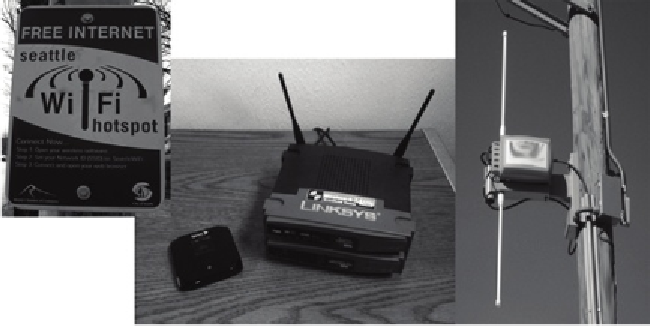Information Technology Reference
In-Depth Information
Network Connectivity
Mobile access will typically enjoy lower bandwidth connections than
wired workstations in the enterprise. Although newer wireless solutions
continue to provide higher speeds of transfer, designers of applications
for mobile access should keep in mind data transfer limitations as well as
smaller display capabilities and limited haptic interface options such as
the obvious lack of a mouse.
Figure 9.3 illustrates common public and private Wi-Fi options, includ-
ing the high-powered outdoor access points used in many municipal sys-
tems, together with short-range commodity devices commonly used in
small office/home office (SOHO) environments. The small square device
is a mobile hotspot that I use when traveling. It bridges cellular data links
(3G/4G) and a short-range connection for up to five Wi-Fi enabled devices.
Because wireless connectivity transmits data in all directions, it is possi-
ble for mobile users to expose sensitive information to unwanted intercep-
tion. Encryption between the device and enterprise resources is necessary
to avoid data disclosure through this access, while on-device encryption
measures should be mandated by policy to ensure that the loss of a mobile
device does not expose organizational data or intellectual property.
Figure 9.3
Wi-Fi access points can be found in many public locations, restau-
rants, offi ce buildings, and homes. Network access points can be secured to
require a password and confi gured for automatic encryption of data transmit-
ted between the access point and a connected device.






























